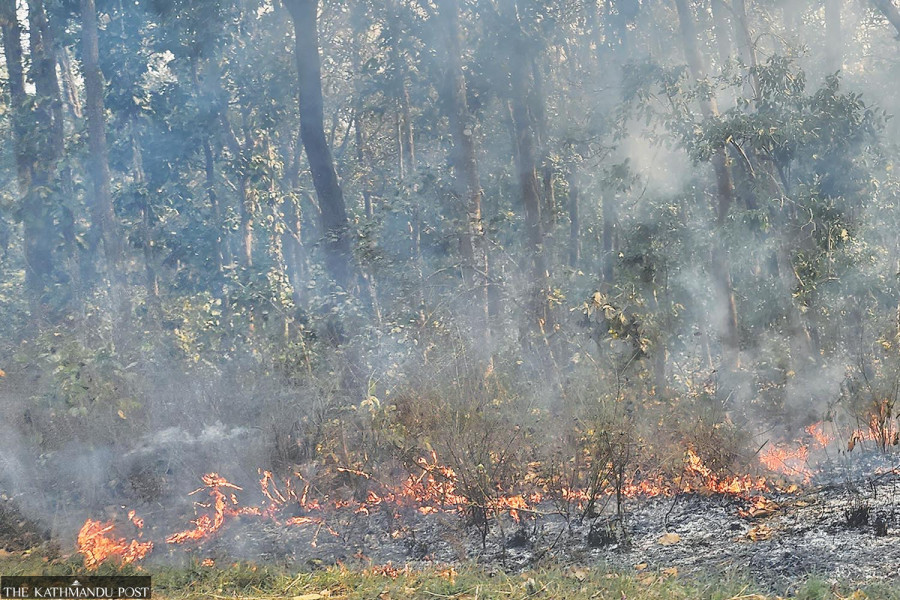Climate & Environment
Frequent wildfires in Tarai forests are exposing animals to poachers
When the forest office is under-equipped, taming the fires and curbing poaching remain a challenge.
Shiva Puri
Incidents of forest fires are recurrent in various parts of Rautahat, a Tarai district of Madhesh Province, with the onset of summer season. The forest fires burn hectares of forest land and cause environmental pollution. The increasing frequency of forest fires is also a major challenge for wildlife conservation.
Sunil Kumar Karna, chief at the Division Forest Office in Rautahat, said the poachers are most active in the dry season when the forests experience wildfires. “The poachers easily target the wild animals as they come out of their habitats due to forest fires,” he said. “Wildfires are the main challenge for wildlife conservation.” Wild animals are in crisis now with the increasing incidents of wildfires in various parts of the district, Karna added.
Wildfires drive the animals out of the forest cover and into the open, exposing them to poachers lying in wait. With the destruction of bushes in the wildfires, poachers can easily target the animals and birds from a distance. It is suspected that the poachers set the forest on fire in some places to trap the animals.
“We have a tough time saving wildlife,” Karna said. “Immediate measures need to be taken if we are to stop poachers from killing wild animals. We have heightened security in the suspicious places. But the forest office alone cannot control the wildfires and poaching.”
The dense forest at Turturedhara, Dabari, Maira, and Lamaha, among other places in Chandrapur Municipality, are the major habitats of wild animals like deer, wild boars, blue bulls, rabbits, monkeys and various species of birds. These areas often report wildfires. According to forest employees, wild animals have now started coming to the East-West highway and Chure areas due to the wildfires.
Poachers generally target deer, wild boars, blue bulls, rabbits and various species of birds. They are usually active in the dry months between March and May. They kill wildlife mainly for meat and smuggle body parts. According to the local residents, poaching is rampant at Chandrapur, Judibela, Chetanagar, Banbohari and Gaidatar areas in Rautahat.
“Poachers kill wild animals and birds almost every day and the meat is sold openly,” said a local of Chandrapur-6 preferring anonymity. “Authorities concerned seem indifferent in controlling forest fires and wildlife poaching.”
The wildfire season generally begins in Nepal between November and December and continues until the onset of monsoon. Karna said wildfires are common during the dry season from mid-February to mid-June in Tarai districts.
Around 50 hectares of forest land have been burnt by the wildfires in Rautahat so far, according to Karna. “The forest fires are not active currently as the recent rains doused the fire,” he said. “But the wildfires continue until the rainy season.”
Efforts are underway to control the wildfires by making fire lines, Karna said, but given that the forest office is under-equipped and under-staffed, controlling wildfires and wildlife poaching will remain a challenge.




 7.12°C Kathmandu
7.12°C Kathmandu










